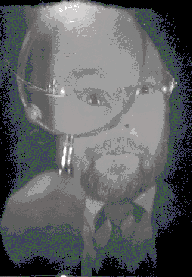|
Pierre Boone
Self Portrait |
 Portraiture and
religion provided artists with patrons for centuries, serving as a primary
use, and moneymaking role. Artists who could glorify the patron stayed
fully booked. Photography usurped the bulk of this role of the painter by
the end of the 19th century, though portraiture has continued as a major
moneymaking endeavor for artists. Those who can afford a painting usually
still choose that medium in many cases because the artist can still
provide a class not achievable by photography. Portraiture and
religion provided artists with patrons for centuries, serving as a primary
use, and moneymaking role. Artists who could glorify the patron stayed
fully booked. Photography usurped the bulk of this role of the painter by
the end of the 19th century, though portraiture has continued as a major
moneymaking endeavor for artists. Those who can afford a painting usually
still choose that medium in many cases because the artist can still
provide a class not achievable by photography. Holography is almost ideal for portraiture and yet its role continues to be evasive. Monochrome, holographic portraits are readily available at a price not much more than a photographic portrait from a high-end photographer and about the same as a painted portrait. Full color holographic portraiture is still not available to the general public. Portraiture is almost certain to become a primary use of holography and it is truly amazing that this has not already happened. Where else can one obtain an image as real as the actual person staring from behind a window? Holographic self-portraits are more plentiful. The Figure illustrates an image from a self-portrait of Pierre Boone. Boone was one of the earliest scientists to recognize, develop, promote, and to use holography in art. He is a recognized contributor to the fundamental technology of art and display holography with many holographers using his bleaching formula referred to as "Boone's Pet". In 2001 he was knighted by the International Order of Holoknights, an elite organization of leading holographers. The white-light-reconstructed image is bright and clear with a wide viewing angle, excellent composition, color tuned to an amber-gray tint, demonstrating his great skill with holography. The work displays Boone’s fundamental knowledge of bleaching and use of film known only to a handful in the world. He exploits the dimensionality of holography further by holding a magnifying glass before him, which extends in front of the hologram plane. The viewer can choose to study his face through the glass or around it. Here Boone metaphorically challenges the viewer to examine him closely and judge whether he is a scientist, an artist, or both. The magnifying glass in this self-portrait also symbolizes Boone's scrutiny of the art world as well as those who refuse to acknowledge his work as art. He has been verbal in his resentment that the art world seems to accept as art only work created by "artists". He frequently publishes his own critiques of the art world and has published rules of art that include "A hologram by an artist is not necessarily art," He is quick to reprimand the often-used tact of artists who excuse poor holography technology as the artist’s prerogative. Closer examination of the hologram reveals a burn spot to the left of Boone's face. This apparently occurred when the magnifying glass focused a part of the laser beam into a high concentration of light, showing that this commonly used "lens trick" in holography (to enhance the parallax) can be dangerous to the eyes in portraiture. Fortunately, the concentration of light missed his eyes, hopefully by design. Holographic portraiture is definitely not for amateurs. Boone has been one of the most prolific holographic portrait artists in the world working in a university laboratory virtually next door to the Ghent Cathedral, in Belgium, which houses Van Eyck's famous Ghent Altarpiece. He has produced portraits of kings, queens, astronauts, AND……………this critic. His work includes other innovative ideas beyond portraiture as art. Having a Boone self-portrait in ones collection will some day be likened to having a self-portrait of Rembrandt. |